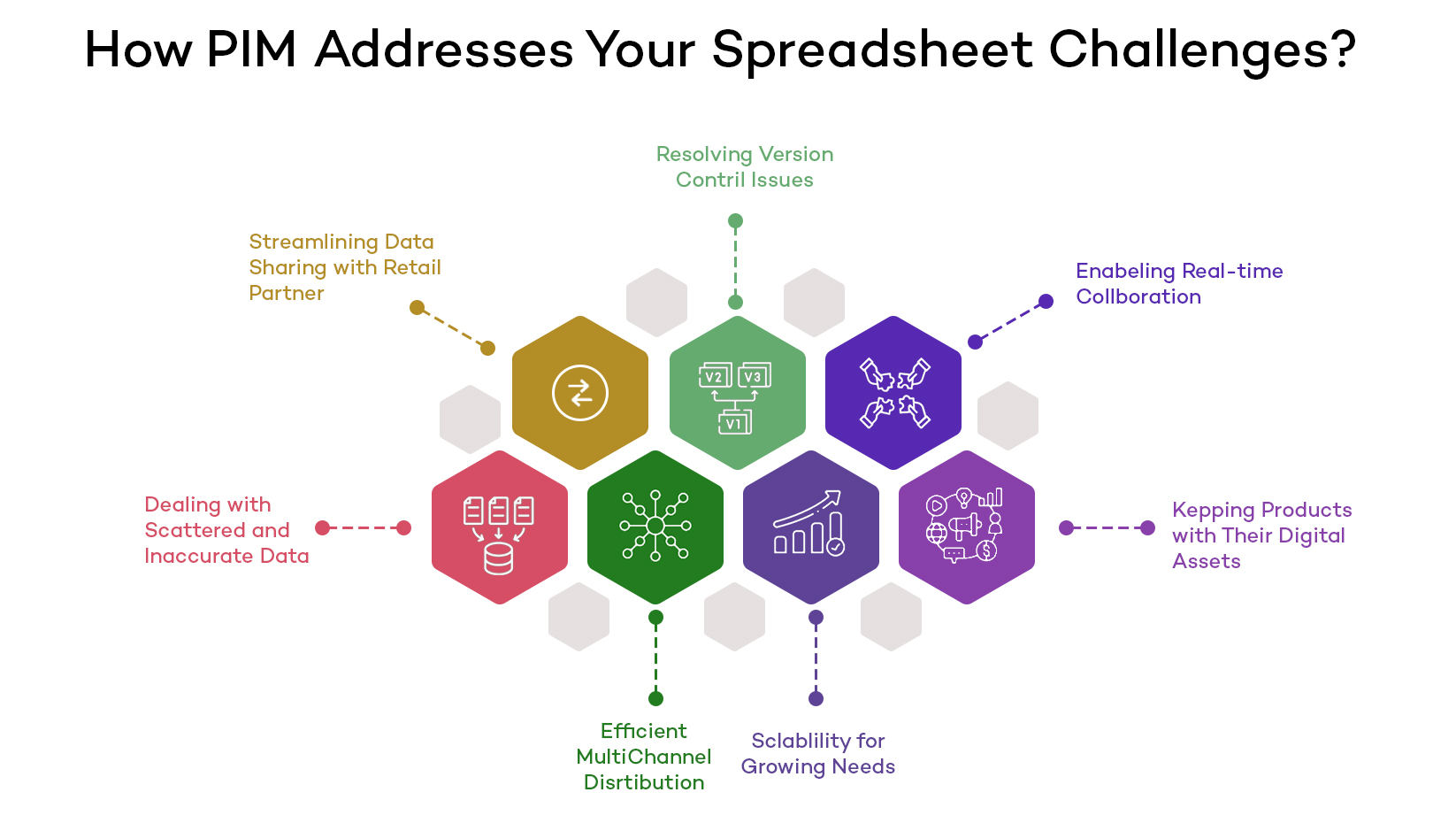Are you currently using spreadsheets to handle your product data? If so, you're likely dealing with a relatively small number of products and a limited range of variations, as spreadsheets are a suitable solution for such cases.
Now, imagine a larger scale!
As your business grows, your product catalog will expand exponentially, potentially reaching hundreds or thousands of data points. What once seemed like an efficient solution for managing products through spreadsheets can quickly become cumbersome and overwhelming. If you've encountered the challenges of spreadsheet management firsthand, you can likely relate to the struggles described. If you're interested in exploring ways to overcome these spreadsheet-related difficulties or seeking an alternative solution to eliminate the reliance on spreadsheets, you've come to the right place.
What are Product Data Sheets?
Product data sheets or Product inventory sheets is comprehensive documents that precisely outline product specifications. These sheets should include details such as name, weight, color, dimensions, components, applications, benefits, and more.
According to Gartner Report, organizations dealing with poor data management costs them an average of USD 12.9 million a year. An effective product datasheet ensures convenient accessibility to information for all stakeholders in the chain, facilitating informed purchasing decisions for customers.
Top Challenges with Using Spreadsheets to Manage Your Product Data
Examine the primary hurdles associated with managing product data in spreadsheets. With this information, you can either work towards minimizing these challenges or explore alternative solutions.
1. Scattered and Inaccurate Data
A frequently overlooked challenge, though blatantly apparent, is dealing with dispersed and unreliable data. Imagine attempting to assemble a puzzle where the pieces are scattered across various rooms in your house. This mirrors the complexity of managing product data spread across spreadsheets and files. Product descriptions may reside in one document and pricing details in another, while your marketing and sales teams maintain separate sets of files. This fragmented data poses a logistical nightmare.
However, the challenge extends beyond merely locating the right data; it involves grappling with data inaccuracies. Inaccurate data is akin to a termite infestation, gradually eroding the structural integrity of your business. Addressing these inaccuracies and maintaining consistency requires significant time and effort to establish processes and implement data checks.
2. Data Sharing Becomes Complex with Retail Partners
Establishing collaborative relationships with retail partners is crucial for expanding your market reach and boosting sales. Nevertheless, sharing your product data with these partners is far from a straightforward task. Each retailer often has specific formatting requirements or prioritizes unique data fields, making the customization of your extensive spreadsheet for each partner a potential recipe for disaster—or, at the very least, for enduring late nights fueled by copious amounts of coffee.
In some cases, eCommerce businesses juggle over 100 spreadsheets to navigate the complexities of managing data across various retailer partners. When confronted with such a level of product data intricacy, it becomes evident that seeking a more streamlined solution is imperative.
3. Inefficient Data Sharing Across Channels
When you follow a multichannel management strategy, the necessity arises to disseminate product data across various platforms—your website, apps, online marketplaces, or even social media stores. As you expand to additional channels, the intricacy of this process intensifies. A seemingly minor modification, such as a price update, can translate into hours of manual editing. It resembles the challenge of pruning a bonsai tree with a lawnmower—awkward, inefficient, and susceptible to errors.
4. Version Control Issues
Navigating version control poses one of the most exasperating challenges when managing products within a spreadsheet. In the current competitive business environment, where multiple team members must update data, the result often manifests as a collection of conflicting versions of the same spreadsheet. The subsequent task involves merging these documents, reconciling disparities, and determining which changes to retain.
Each minute devoted to this endeavor represents a minute diverted from the core activities of your business. To maintain control over version discrepancies, stringent processes must be established in the hope of averting tangled versions. This necessitates thorough file organization and a team disciplined enough to adhere to these measures.














































































.jpg?w=3840&q=75)


.png?w=3840&q=75)











.jpg?w=3840&q=75)

